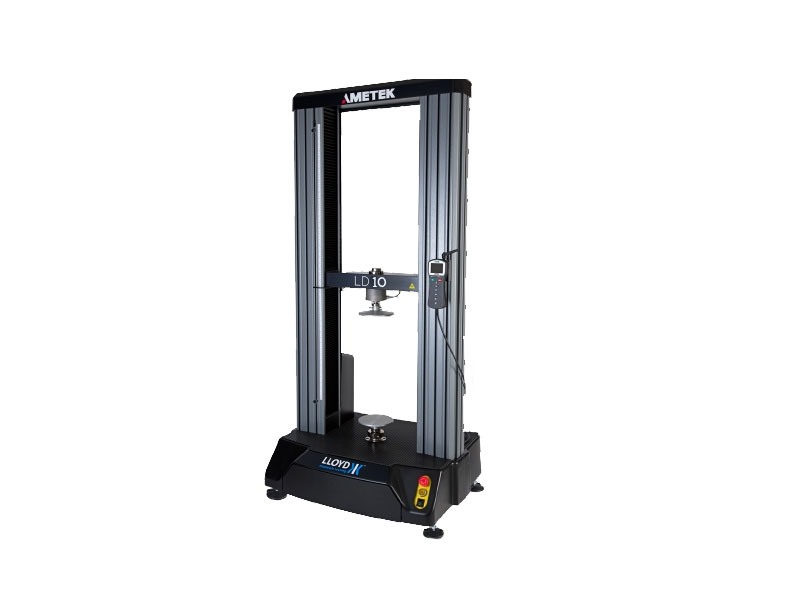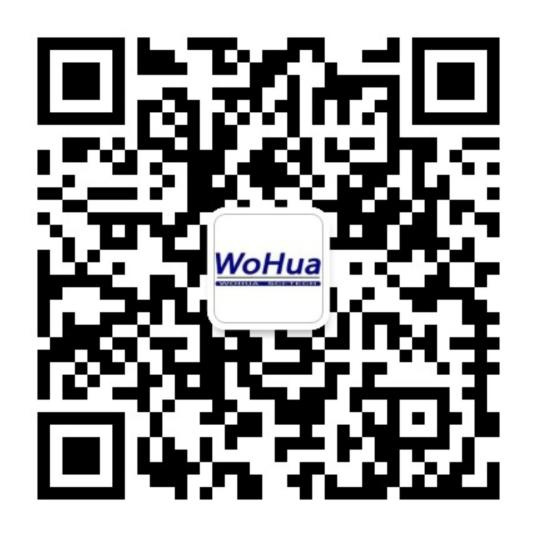universal material testing machine Lloyd LD10

universal material testing machine Lloyd LD10
Test Object: General
Category: Precision Mechanics Test
product characteristics
0.5% reading level accuracy: LLOYD products adopt reading level test accuracy (0.5% Rdg). Different from the conventional full-scale test accuracy (0.5% FS), the indication error of the reading-level test accuracy is a relative error based on the measurement result value. The indication error of the full-scale test accuracy is calculated based on the full-scale of the sensor and belongs to absolute error. The error deviation is about obvious when the force value is smaller. LLOYD series of mechanical testing products have an effective testing range of 1% ~ 100% for their reading level accuracy.
Automatic identification, plug-and-play intelligent sensor: LLOYD material testing machine adopts intelligent sensor, and a host can be equipped with multiple sensors with different ranges to achieve more accurate test range and finer resolution. Each sensor can be plug and play, without the need for the user to make additional calibration parameter calls, which greatly facilitates the user's operation. At the same time, when a laboratory has multiple LLOYD hosts, it also supports one sensor to be connected to multiple testing machines and inserted into the slot after each connection.
Data sampling frequency: single channel 1000Hz:LLOYD test system host standard two standard acquisition channels: force value and displacement. Each channel has an independent 1000Hz data sampling frequency and an unconventional shared sampling rate. Independent sampling channels ensure more data sampling points in each channel, so that the machine can record the instantaneous changes of samples more realistically, and provide analysis data closer to the physical properties of materials for scientific research and testing. At the same time, the data sampling rate of LLOYD test system can be flexibly set according to user requirements, which has met the data requirements of different users.
32-bit A/D conversion: Conventional tensile machine products generally sample 16-bit A/D conversion, while LLOYD LD series uses 32-bit A/D conversion, which makes it possible for LLOYD LD series tensile machines to achieve higher data resolution and provides a hardware basis for more accurate control and measurement.
a minimum test speed of 0.0001 mm/min: lower test speed requires a perfect combination of high-quality motor drive system and higher data resolution to achieve. the minimum test speed of LLOYD LD series material testing machine can reach 0.0001 mm/min, which can realize more precise test speed control and simulate the physical property changes of some samples during micro deformation.
Full load test speed mark: In the LLOYD test system, the test speed of the parameter mark is the full load test speed, which is the test speed that can be achieved when the host reaches the maximum load set by the machine.
on-site real stiffness compensation technology: due to the different working environment of each host, different sensor configurations, different fixtures and different connectors, the stiffness loss of each host in the working state is actually different, and these stiffness losses will greatly affect the final test results. LLOYD series material testing machine can truly calculate the amount of stiffness loss on the user's site, and automatically compensate for stiffness, so that users can obtain more realistic control variables.
supports multi-signal access: the results of a routine test of a material testing machine are force value, displacement, deformation, etc., and with the progress of material science and the diversity of test samples, we will also need force value and sample The relationship between voltage changes, the relationship between resistance, current, capacitance, inductance, and charge changes, the relationship between temperature and pressure changes, and the relationship between weight, volume, frequency, etc, these additional variables generally require additional equipment for acquisition; LLOYD material test system can flexibly access a variety of test signals, with a set of LLOYD test software for synchronous acquisition of a variety of data, greatly improving the test efficiency and data reliability.
test program supports visual programming: user-defined programming is often the pain point of most users. LLOYD operating software is visual programming. Users can edit test steps according to test needs, and the editing process is clear and concise. At the same time, LLOYD's powerful programming ability can easily realize multi-speed change, force value load guarantee, displacement load guarantee, small cycle, large cycle and other multi-type settings, and can be nested with each other to realize more complex test programs. Powerful programming function makes LLOYD test system can easily add new test methods, which can provide higher flexibility for scientific research and testing.
Flexible test result processing and statistics functions: LLOYD test results can be flexibly output into various formats or transmitted to different systems, providing users with great convenience for subsequent data analysis and data management. At the same time, LLOYD test software has built-in a powerful statistical analysis system, and users can complete routine statistical analysis work in LLOYD control software.
Open Test Software: LLOYD Random NexygenPlus Test Software is an open operating system. Users can get all the functions of the NexygenPlus in one purchase. When they need to use more functions later, they only need to enter the corresponding interface to set them. There is no closed option. When programming the test method, the NexygenPlus software supports viewing the source code, so that users can clearly understand the source code setting and calculation of the whole set of test operations. Users can directly check whether there are data revisions hidden in the source code to provide users with data confidence.
Open International Standard Library: LLOYD's random NexygenPlus measurement and control software randomly carries a variety of commonly used international standards such as ISO, ASTM, DIN, FINAT, TAPPI, etc. At the same time, the standard library is open, and users can directly select relevant standards for testing without additional charges. At the same time, users can flexibly add new test standards.
Dynamic video/still image acquisition function: LLOYD test software supports dynamic video recording and static test image image acquisition functions during the test process. The recorded video can record the whole process of physical property changes synchronously with the test curve, and supports the video and curve after the test Synchronous playback analysis, can be paused at any node to view the dynamic relationship between force and video, to view the real-time status of key physical property changes, it provides more dimensions for experimental analysis.
User level permission setting and data traceability requirements that meet the requirements of FDA21 CFR Part 11: The NexygenPlus measurement and control software can meet the requirements of the U.S. Food and Drug Administration for user level permission setting and data traceability, and its audit tracking function has been verified by many medical enterprises.
CAN BUS communication technology: LLOYD LD double-column material testing machine adopts BOSCH's advanced CAN BUS data communication technology. While collecting force value, displacement and other data, it also reserves 5 additional acquisition channels for future access More test signals.
Secondary startup operation: The host system has its own Safeline warning light. After startup, the warning light can be dimmed and turned off before entering the working state, which strictly meets the relevant safety requirements of European CE standards.
Pogo model design: LLOYD LD series hosts can configure Pogo models, that is, move the test station below the entire host to use a wider test space to provide a mature model solution for mechanical testing of large samples.
Main functions
is suitable for the analysis of various mechanical properties with a maximum load of 10KN(2248 lbf). The LD10 adopts a double-column portal structure. The maximum cross beam of the standard model has a travel range of 1306mm, an eye-end distance of 1070mm, and a width of 452mm between the columns. It can not only meet the conventional mechanical analysis requirements of customers, but also realize the direct placement of large test samples. For material testing with larger extension amount, LD series models can use heightened models to obtain higher extension amount. For super-large test samples or tests that require larger test space, LLOYD Pogo models can extend the test space on the basis of mature LD models to obtain more flexible operation space. With LLOYD NexygenPlus professional measurement and control software, and various professional test aids and customized tooling, LLOYD test system can easily complete the tensile, compression, bending, tearing, peeling, puncture, load retention, friction coefficient of various samples, Stress and strain, elastic modulus, adhesive strength, fatigue strength, creep and relaxation properties, mechanical properties under temperature environment and other material tests, it provides a strong and favorable physical testing guarantee for product research and development, manufacturing and quality control in various industries.
LLOYD LD material testing system is widely used in electronics, medical, scientific research, universities, automobiles, aviation, new energy, military industry, food, textiles, polymers and other fields to meet international standards of operating methods and customized testing programs to serve all kinds of customers around the world.
technical parameters
Maximum bearing capacity: 10KN
standard maximum stroke: 1070mm
beam speed: 0.0001-1270 mm/min
Maximum return speed: 1270 mm/min
speed accuracy: 0.1%
minimum sensor resolution: 1/109
sensor accuracy: 0.5% Rdg
Displacement resolution: 0.000354um
Data sampling rate: 1000Hz
width between columns: 452mm
Host weight: 225kg
Host size: H * W * D 833 x 634 x 1728 (mm)
load measurement system: EN ISO 7500:2015, Class 0.5, ASTM E4
Work environment and storage environment requirements
relative humidity: 20% to 85%
operating temperature: 10 ℃40°C (50 to 104 °F)


 Add.:Room 802, Block E, Power Creative Building, Shangdi East Road No. 1 , Haidian District, Beijing
Add.:Room 802, Block E, Power Creative Building, Shangdi East Road No. 1 , Haidian District, Beijing
 Hotline:400-818-6918
Hotline:400-818-6918
 Web:www.wohuakeji.com
Web:www.wohuakeji.com

